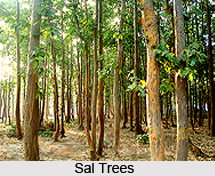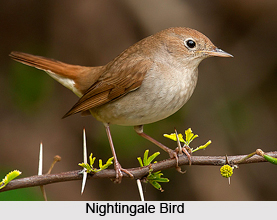 Natural resources of Uttar Pradesh exhibit a great variety. The huge mountain ranges of the state forms the storehouse of a plethora of materials which cater the needs of a large number of industries. Flora and fauna of the state also have a rich diversity including numerous species. Three different varieties of forests are found in the state, which flourish in different climatic and geographical conditions. The fauna sheltered by them are also diverse. Apart form these, Uttar Pradesh also hosts different types of birds and aquatic species which further diversify the natural resources of the state.
Natural resources of Uttar Pradesh exhibit a great variety. The huge mountain ranges of the state forms the storehouse of a plethora of materials which cater the needs of a large number of industries. Flora and fauna of the state also have a rich diversity including numerous species. Three different varieties of forests are found in the state, which flourish in different climatic and geographical conditions. The fauna sheltered by them are also diverse. Apart form these, Uttar Pradesh also hosts different types of birds and aquatic species which further diversify the natural resources of the state.
Mineral Resources of Uttar Pradesh
Limestone is found abundantly in the state, although its distribution differs from region to region. It is mainly found in Kajrahat region of Sonebhadra district and Guruma-Kanach- Bapuhari regions of Mirzapur district. Dolomite is found in Banda, Sonebhadra and Mirzapur districts of the state whereas glass-sand is found in Mau district, Karwi region of Banda district and Karchhana Tehsil of Allahabad district. Sonebhadra and Mirzapur are affluent with marble while Rajhgewan of Banda district is rich in bauxite. Bansi area of Mirzapur district is known for non-plastic fireclay and Lalitpur district for uranium. Apart from these major minerals, other ones found in minor amount includes salt punter, marang, pebbles and sandstone.
Flora of Uttar Pradesh
Uttar Pradesh hosts a vast variety of flora. Its richness and diversity can be witnessed in the plains. However, the vegetation of distinct regions differs owing to the local climate and needs of the inhabiting people. Natural forests in the state are found in patches scattered in the plain lands. However in the mountainous and sub mountainous regions, extensive areas are under forest cover. The forest of the state can be broadly categorized into three divisions.
Tropical Moist Deciduous Forests
 The first division comprise tropical moist deciduous forests which are found in most of the regions of Terai with an average rainfall of about 100 to 150 centimetres and average temperature ranging from 26 to 27 degree Celsius. Considerable humidity is also required to support such type of vegetation. At higher elevations, deciduous trees of uneven size grow abundantly.Common vegetations found in lower areas are climbers, evergreen shrubs and bamboos. Other common species of this forest include Jamun, Amla, Dhak, Mahua Semal, Jhingal, Palas, Ber, Gular, Sal and others.
The first division comprise tropical moist deciduous forests which are found in most of the regions of Terai with an average rainfall of about 100 to 150 centimetres and average temperature ranging from 26 to 27 degree Celsius. Considerable humidity is also required to support such type of vegetation. At higher elevations, deciduous trees of uneven size grow abundantly.Common vegetations found in lower areas are climbers, evergreen shrubs and bamboos. Other common species of this forest include Jamun, Amla, Dhak, Mahua Semal, Jhingal, Palas, Ber, Gular, Sal and others.
Tropical Dry Deciduous Forests
The second category of forest is tropical dry deciduous forests which can be traced in plains including the eastern, western and central regions. Shrubs and herbs are found in abundance here. However, for cultivation, large areas have been cleared in this forest. Significant trees are Anjeer, Bel, Amaltas, Palas and Sal. In moist areas and along the river banks Tamarind, Babul, Jamun and Mango grow commonly.
Tropical Thorny Forests
The third division of forest comprise tropical thorny forests. South western parts of Uttar Pradesh are rich in tropical thorny forest. The vegetation belonging to this category usually grows in the regions of scanty rainfall, low humidity (less than 47 percent) and an average temperate of 25 to 27 degree Celsius. Thorny tress grows extensively in this forest such as Euphorbias, thorny legumes, Babool etc. Short grasses thrive during rainy seasons. The forest is referred as open dry due to small size of the trees. Common species found here are Neem, Danjha, Dhaman, Kokke, Khair and Phulai. Resin and gum are widely extracted from these trees.
Fauna of Uttar Pradesh
The dense and vast forest cover of Uttar Pradesh shelters a variety of fauna of the state. Apart from forest, avian and aquatic species are also high in number. Fishes of the state include Trout, Mirror Carp, Einghi, Eel, Cuchia, Mangur, Labi, Mirgal, Rohu, Hilsa and many more. Frogs and Toads are the common amphibians of the state while the reptiles enlist Crocodile, Dhaman, Krait, Tortoise, Cobra, Goh, Lizard, Bamania etc. Vast variety of mammals also inhabits in the state of Uttar Pradesh and includes Mouse, Buffalo, Cow, Mongoose, Porcupine, Squirrel and many more. Amongst birds the common species are Nightingale, Peacock, Vulture, Sparrow, Nilkanth, Parrot and Pigeon. Apart from these, many other varieties of fauna dwell in the state in distinct habitats and climatic conditions.



















